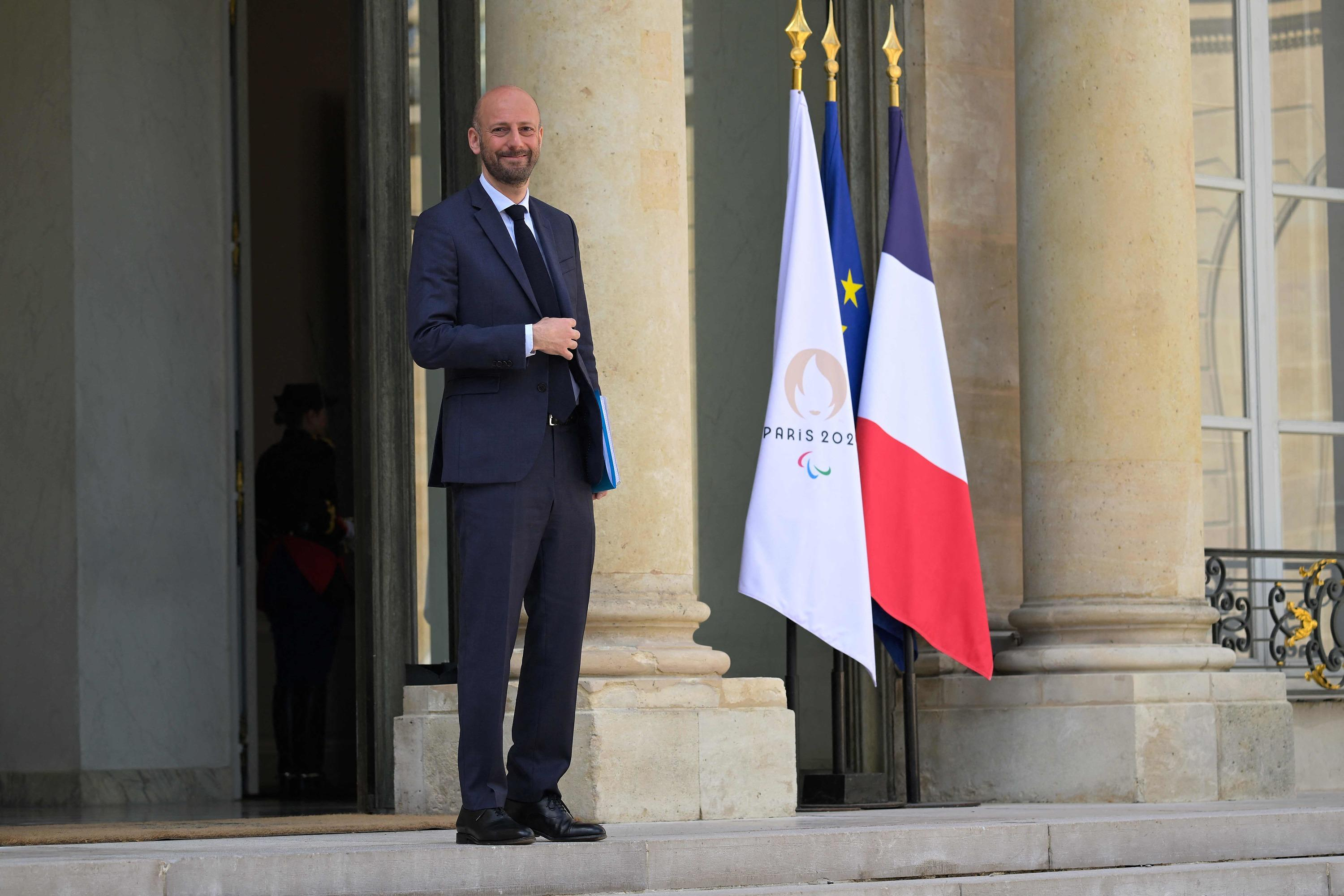Since its opening in 1974, the Köhlbrandbrücke in the port of Hamburg has developed into one of the symbols of the Hanseatic city. But the curved bridge with its two blue 135 meter high pylons is no longer up to today's requirements for a crossing over the Köhlbrand, a side arm of the Elbe. 38,000 vehicles, a third of them trucks, drive across the bridge every day. It was built for significantly fewer and lighter vehicles.
After 50 years at the latest, the Köhlbrand Bridge will have reached its technical service life. In addition, the bridge, with its 53 meters above the average Elbe flood, is no longer high enough for the really large container ships. As a result, they cannot approach the Altenwerder terminal.
Therefore, the city announced in 2012 that the old bridge should be replaced by 2030. Initially, it was assumed that a new Köhlbrand bridge would be built 73 meters above the water. The construction of a tunnel has been the preferred option since 2018, and some of it is already planned. In 2020, Mayor Peter Tschentscher (SPD) and the then Federal Transport Minister Andreas Scheuer (CSU) agreed that the federal government would contribute to the costs of tunnel construction. Since then, however, plans for the new building have been silent – until this weekend.
As the "Hamburger Abendblatt" and the "NDR" reported unanimously, the Hamburg Port Authority (HPA) is said to have calculated that the construction of the tunnel would cost more than five billion euros. Until then, costs of 3.2 billion euros had been assumed.
It is not known how much the federal government would subsidize. The new federal government has not yet commented on the project - partly because the plans are not yet concrete enough from the point of view of the Federal Ministry of Transport.
The Hamburg Economic Authority, which has been under the leadership of Senator Melanie Leonhard (SPD) since December, sees the fact that the planning has not progressed far enough. Leonhard is currently having the previous plans for the Köhlbrand crossing checked.
"The authorities involved are currently dealing with the results of preliminary planning and are examining, among other things, within the framework of feasibility studies, which implementation steps are required in detail," said a spokesman for the economic authority on the status of the planning. Reliable estimates for time and cost planning are not yet available, also in view of the general development of construction costs.
The HPA is also closed to the media reports. When asked, their Chief Commercial Officer Friedrich Stuhrmann said on Monday that the alleged sharp cost increases for the Köhlbrand crossing would be “examined carefully and our conclusions drawn from them at the right time.”
According to previous plans, the construction of the tunnel should start at the end of 2026 and – when it is finished – the demolition of the bridge should start in 2034. It would take another two years for the Köhlbrand Bridge to finally disappear. In view of the low planning depth, however, it seems increasingly unlikely that the schedule can still be adhered to.
Theoretically, the tunnel project could also fail entirely due to the predicted costs. Because in addition to a concrete commitment from the federal government, the approval of the Senate and Parliament is still missing in Hamburg. However, these will only take place when at least the cost plan is in place. Hamburg has set itself the goal of building at stable costs. The money for projects is only released by the citizenry when the price - plus security discounts for possible cost increases - can be calculated with certainty.
A first commitment to the construction of a tunnel should be given with the new port development plan. The tunnel is currently the only possible new crossing under the Köhlbrand. The drawing up of the plan began in 2021. The economic authority is currently still working on the last details before the decision in the Senate is prepared by informing all other authorities and involving them if desired. The plan was originally supposed to be discussed in the citizenship at the end of 2022, but you still have to wait for the vote in the Senate.
And that's where the environmental organizations come into play. They see the supposed increase in costs for the construction of the Köhlbrand Tunnel as an opportunity to stop another project that they don't like. Their reasoning, which should also catch on with the decision-makers in the environmental and transport authorities and in the parliamentary groups: if Hamburg affords the construction of an expensive Köhlbrand tunnel, the city cannot handle another major project in the port, namely the A26 East . Environmental groups have been protesting against their construction for years. The expensive Köhlbrand tunnel could only be realized if all plans for the motorway section were stopped.
The A26 East is a planned cross-connection between the A1 and the A7 in the south of Hamburg. Costs of a little less than two billion euros are planned for the section of Autobahn 26, which is intended to relieve the A7 from port traffic, among other things. The environmental organizations reject their construction because moor areas on the southern Elbe would be built over and habitat for rare animal and plant species would be destroyed.
That is why the environmental associations, which have so far prevented infrastructure projects in Hamburg rather than promoted them, are in favor of the construction of the Köhlbrand tunnel. "The federal government and Hamburg should implement an important and good project with an expensive Köhlbrand tunnel, which is indispensable for the port and shipping, instead of including the A26 East, two inadequate and bad ones," said Nabu and BUND on Sunday in the same way.
Hamburg cannot afford “a residual ramp solution” in the port. An "optimal Köhlbrand crossing in the form of a tunnel" is absolutely essential for the Port of Hamburg, because the crossing in the extension serves the important main port route on the Veddeler Damm. If an expensive A26 Ost were built, while only a cheap bridge could be built for the Köhlbrand for cost reasons, the port would be done a disservice.
"Instead of planning wrongly, it is better to prioritize sensibly." And that could only mean deleting the A26 Ost from the federal traffic route plan, "so as not to endanger a qualitatively reasonable and appropriate Köhlbrand crossing," according to BUND and Nabu.

 B:SM will break its investment record this year with 62 million euros
B:SM will break its investment record this year with 62 million euros War in Ukraine: when kyiv attacks Russia with inflatable balloons loaded with explosives
War in Ukraine: when kyiv attacks Russia with inflatable balloons loaded with explosives United States: divided on the question of presidential immunity, the Supreme Court offers respite to Trump
United States: divided on the question of presidential immunity, the Supreme Court offers respite to Trump Maurizio Molinari: “the Scurati affair, a European injury”
Maurizio Molinari: “the Scurati affair, a European injury” First three cases of “native” cholera confirmed in Mayotte
First three cases of “native” cholera confirmed in Mayotte Meningitis: compulsory vaccination for babies will be extended in 2025
Meningitis: compulsory vaccination for babies will be extended in 2025 Spain is the country in the European Union with the most overqualified workers for their jobs
Spain is the country in the European Union with the most overqualified workers for their jobs Parvovirus alert, the “fifth disease” of children which has already caused the death of five babies in 2024
Parvovirus alert, the “fifth disease” of children which has already caused the death of five babies in 2024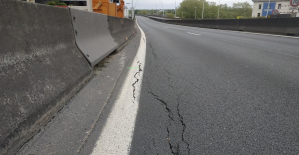 The A13 motorway will not reopen on May 1
The A13 motorway will not reopen on May 1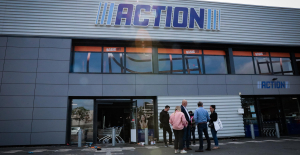 More than 1,500 items for less than 1 euro: the Dutch discounter Action opens a third store in Paris
More than 1,500 items for less than 1 euro: the Dutch discounter Action opens a third store in Paris 100 million euros in loans, water storage, Ecophyto plan… New measures from the executive towards farmers
100 million euros in loans, water storage, Ecophyto plan… New measures from the executive towards farmers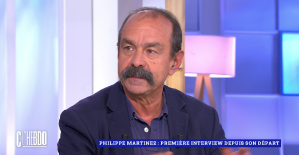 “He is greatly responsible”: Philippe Martinez accuses Emmanuel Macron of having raised the RN
“He is greatly responsible”: Philippe Martinez accuses Emmanuel Macron of having raised the RN Les Galons de la BD dedicates War Photographers, a virtuoso album on the Spanish War
Les Galons de la BD dedicates War Photographers, a virtuoso album on the Spanish War Theater: Kevin, or the example of an academic failure
Theater: Kevin, or the example of an academic failure The eye of the INA: Jean Carmet, the thirst for life of a great actor
The eye of the INA: Jean Carmet, the thirst for life of a great actor The Nuc plus ultra: St Vincent the Texane and Neil Young the return
The Nuc plus ultra: St Vincent the Texane and Neil Young the return Skoda Kodiaq 2024: a 'beast' plug-in hybrid SUV
Skoda Kodiaq 2024: a 'beast' plug-in hybrid SUV Tesla launches a new Model Y with 600 km of autonomy at a "more accessible price"
Tesla launches a new Model Y with 600 km of autonomy at a "more accessible price" The 10 best-selling cars in March 2024 in Spain: sales fall due to Easter
The 10 best-selling cars in March 2024 in Spain: sales fall due to Easter A private jet company buys more than 100 flying cars
A private jet company buys more than 100 flying cars This is how housing prices have changed in Spain in the last decade
This is how housing prices have changed in Spain in the last decade The home mortgage firm drops 10% in January and interest soars to 3.46%
The home mortgage firm drops 10% in January and interest soars to 3.46% The jewel of the Rocío de Nagüeles urbanization: a dream villa in Marbella
The jewel of the Rocío de Nagüeles urbanization: a dream villa in Marbella Rental prices grow by 7.3% in February: where does it go up and where does it go down?
Rental prices grow by 7.3% in February: where does it go up and where does it go down? Even on a mission for NATO, the Charles-de-Gaulle remains under French control, Lecornu responds to Mélenchon
Even on a mission for NATO, the Charles-de-Gaulle remains under French control, Lecornu responds to Mélenchon “Deadly Europe”, “economic decline”, immigration… What to remember from Emmanuel Macron’s speech at the Sorbonne
“Deadly Europe”, “economic decline”, immigration… What to remember from Emmanuel Macron’s speech at the Sorbonne Sale of Biogaran: The Republicans write to Emmanuel Macron
Sale of Biogaran: The Republicans write to Emmanuel Macron Europeans: “All those who claim that we don’t need Europe are liars”, criticizes Bayrou
Europeans: “All those who claim that we don’t need Europe are liars”, criticizes Bayrou These French cities that will boycott the World Cup in Qatar
These French cities that will boycott the World Cup in Qatar Paris 2024 Olympic Games: “It’s up to us to continue to honor what the Games are,” announces Estanguet
Paris 2024 Olympic Games: “It’s up to us to continue to honor what the Games are,” announces Estanguet MotoGP: Marc Marquez takes pole position in Spain
MotoGP: Marc Marquez takes pole position in Spain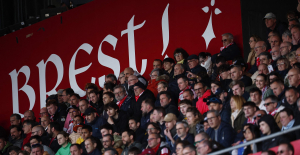 Ligue 1: Brest wants to play the European Cup at the Stade Francis-Le Blé
Ligue 1: Brest wants to play the European Cup at the Stade Francis-Le Blé Tennis: Tsitsipas released as soon as he entered the competition in Madrid
Tennis: Tsitsipas released as soon as he entered the competition in Madrid




